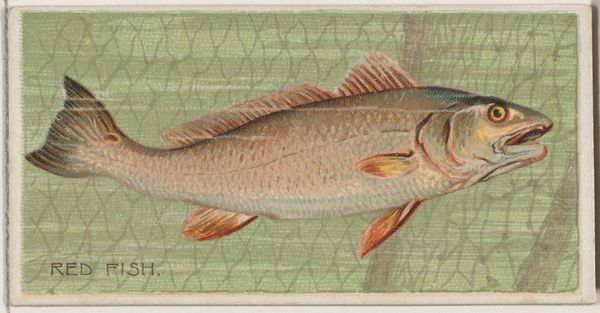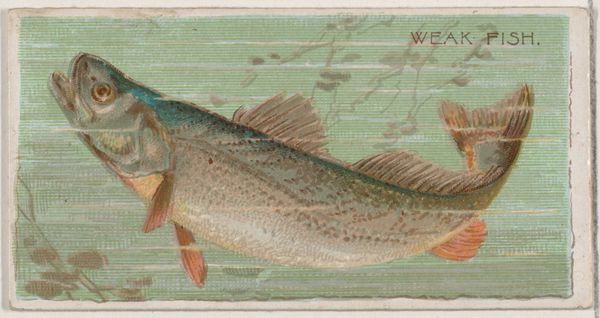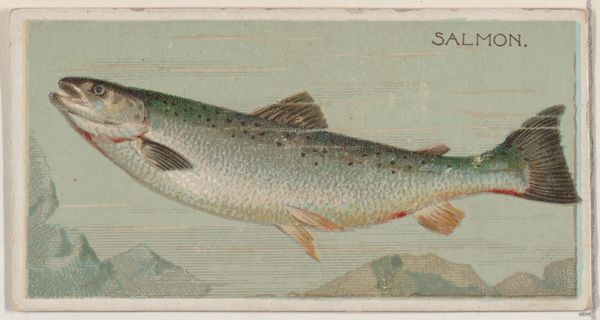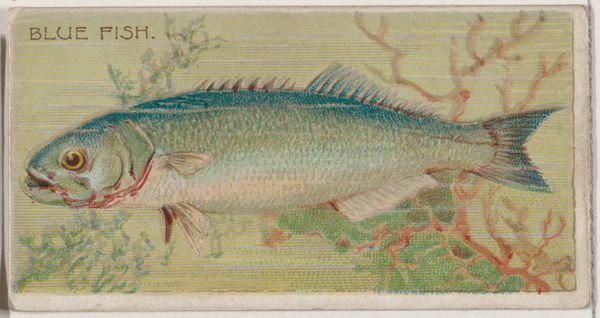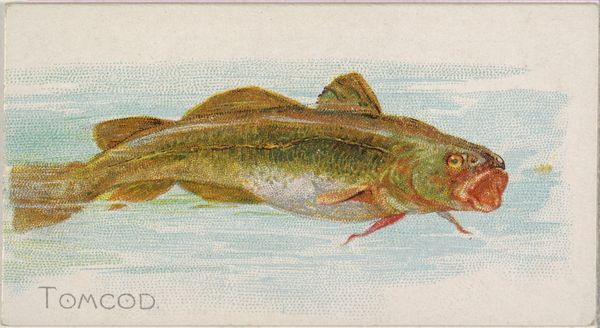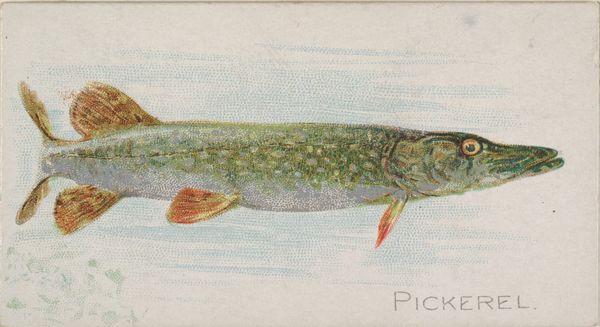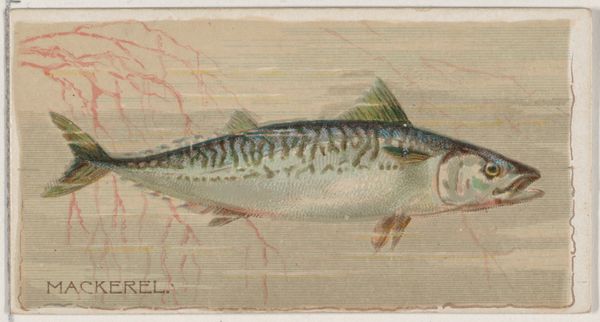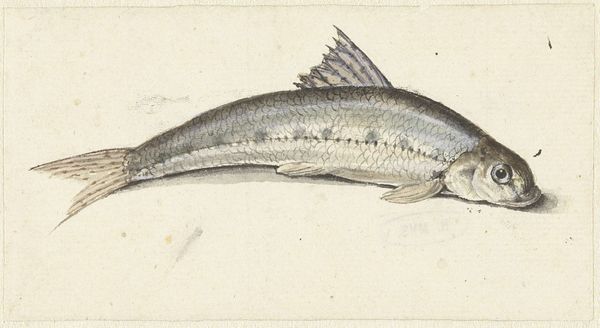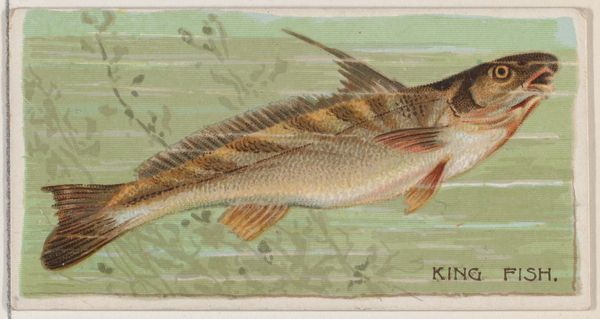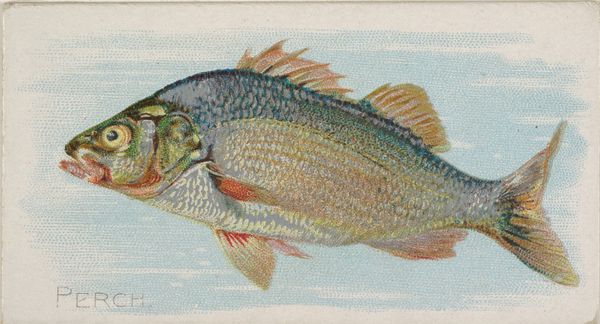
Pickerel, from the series Fishers and Fish (N74) for Duke brand cigarettes 1888
0:00
0:00
drawing, coloured-pencil, lithograph, print, watercolor
#
drawing
#
coloured-pencil
#
water colours
#
lithograph
# print
#
watercolor
#
coloured pencil
#
watercolour illustration
Dimensions: Sheet: 1 7/16 × 2 3/4 in. (3.6 × 7 cm)
Copyright: Public Domain
Curator: This lithograph from 1888 by Knapp & Company is titled "Pickerel, from the series Fishers and Fish (N74) for Duke brand cigarettes." It gives us an interesting peek into the marketing of the time. Editor: Immediately, I see the pickerel rendered with delicate watercolor. Its posture seems almost celebratory against the background which looks almost like parchment. There's a sense of understated elegance here. Curator: It is striking, especially when considering its original purpose. These cards were included in cigarette packs as collectibles, designed to build brand loyalty with appealing imagery. The fish are highly detailed and accurately rendered; an element likely considered very seriously by the client, Duke. Editor: Absolutely, beyond commercial applications. Fish have long held a rich symbolic charge, representing fertility, abundance, and even spiritual transformation across many cultures. But here, within this rectangular border and advertisement context, it takes on this new dimension of collectability and luxury associated with a very specific, booming brand. Curator: Exactly, it’s the transformation of a natural object into a commodity, imbued with aspirational qualities by its association with the Duke name. We also need to acknowledge that mass-produced imagery also helped shape ideas of nature and leisure, circulating particular versions and priorities within the population at large. Editor: And I imagine the very act of collecting these cards instilled a certain ethos. An engagement in popular cultural history that blends science and aesthetics as related forms. Each image adding up to some greater portrait of societal desires and aspirations. Even if those desires are packaged with tobacco. Curator: The scale of the image is itself important to consider in regards to its original distribution model, so being on display at the Metropolitan Museum allows an access that wasn’t otherwise available to some segments of the public. It opens access, prompting reflections of how nature has been and continues to be perceived and promoted. Editor: Indeed. I find myself looking at it now and imagining its impact on folks a century and a half ago. To me, that blending of nature and marketing tells quite a story about both our cultural values, our place in the natural order and its continuing echoes today.
Comments
No comments
Be the first to comment and join the conversation on the ultimate creative platform.
